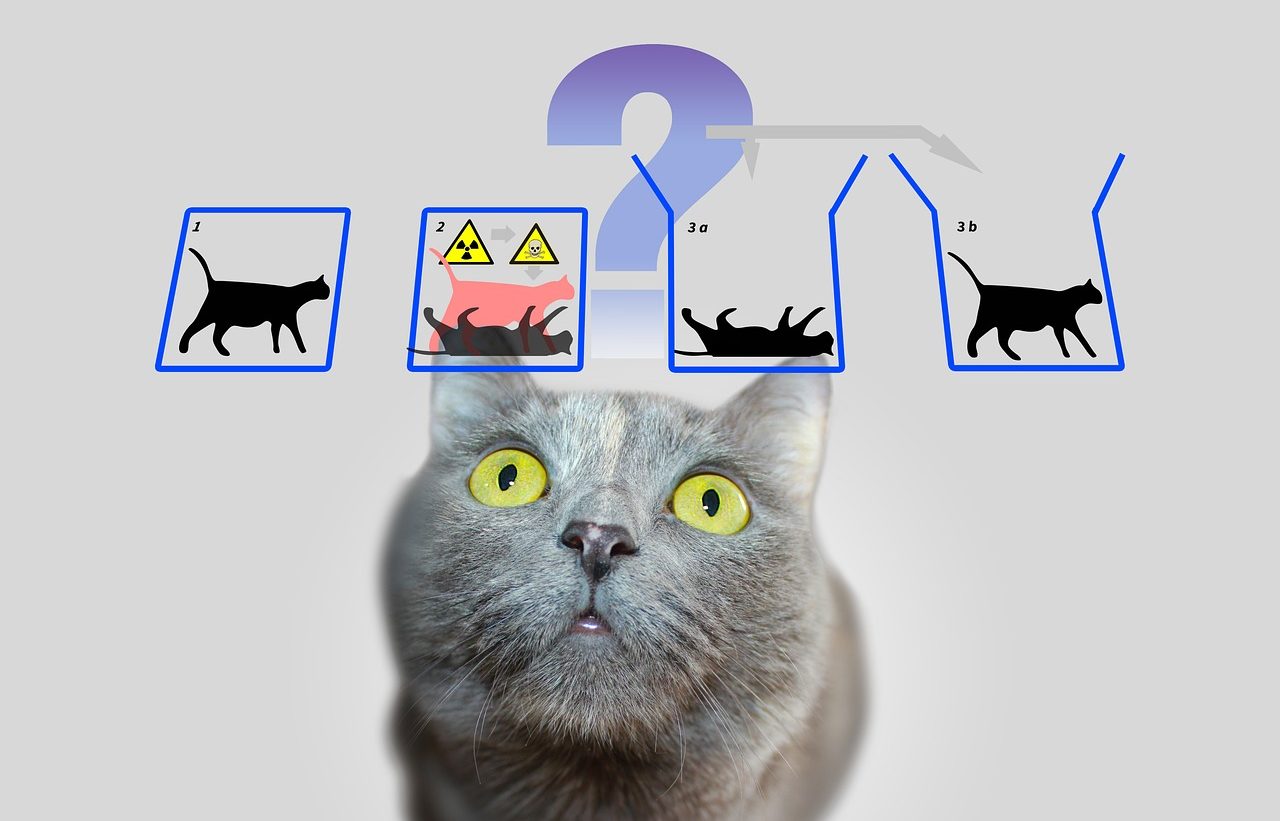
The thought experiment known as Schrödinger's cat poses a scenario centered on a hypothetical panorama of a live and dead cat (superposition).
Schrödinger's cat is the name given to a thought experiment that Erwin Schrödinger devised in 1935.
It should be noted that this philosopher and physicist of Austrian origin who obtained Irish nationality, in addition to making valuable contributions in the field of thermodynamics and quantum mechanics, managed to leave an indelible mark on science by proposing the so-called Schrödinger equation . In recognition of his important contributions, he received the Nobel Prize in Physics in 1933 .
According to what is said, the content popularized as Schrödinger's cat , which is sometimes conceived as a paradox , was created within the framework of an exchange of opinions by letter between Erwin and Albert Einstein .
History of Schrödinger's cat
When searching for information about the origin and history of Schrödinger's cat , on the one hand, the Copenhagen interpretation made by Niels Bohr together with his colleagues such as Werner Heisenberg and Max Born in relation to orthodox or traditional quantum mechanics becomes relevant. On the other hand, the EPR (Einstein-Podolsky-Rosen) paradox gains prominence since Erwin wanted his experiment to serve to discuss or debate it.
This physicist, motivated by the theory that indicates that a quantum system persists in a state of quantum superposition until an influence, observation or interaction arises with respect to the external plane, proposed a hypothetical scenario. In this sense, he detailed how it could be achieved, in a certain large-scale system, to develop a superposition based on the dependence generated with a quantum particle that was in superposition .
He then imagined a cat placed inside a steel chamber. In his postulate, the survival or death of the animal depended on the condition of a radioactive atom , whether it presented any alteration and emitted radiation or not (thus causing the cat's death). Far from wanting to promote a serious representation of a cat simultaneously alive and dead, this expert appealed to the example of hypothetically having a cat that, simultaneously, can have life and lose it in order to demonstrate the absurd essence of the conception that is had on quantum mechanics .

Erwin Schrödinger and Albert Einstein had an exchange of letters that led to Erwin's idea of proposing a mental experiment based on the life or death state of a cat locked in a cage.
Influences
Schrödinger's cat experiment has remained in history , crossing eras, borders and even disciplines.
When analyzing the plot of “Dark Materials” , a science fiction production that was released on Apple TV , for example, it is noted that the idea of Schrödinger's cat has been taken as inspiration when developing the plot of the series. The paradox associated with Erwin is also present in an American film directed by James Ward Byrkit entitled “Coherence” .
It is even possible to discover reading materials with this experiment as your muse. As a reference we will cite “Curiosity killed Schrödinger's cat” , “In search of Schrödinger's cat” and “Schrödinger's cat. “A journey of no return.”

Schrödinger's cat experiment encourages us to reflect on the difficulties that arise when trying to adapt the laws of quantum mechanics to the macroscopic universe.
Interpretations linked to Schrödinger's cat
There are several arguments focused on quantum mechanics in which the Schrödinger's cat experiment comes into play, as can be seen from the data that we will share below.
Working with the Copenhagen interpretation , to point out one possibility, reveals the collapse of the wave function , a phenomenon of an irremediable and irreversible nature. In this context, it is indicated that, when the box is opened and its interior is observed, the system is modified, offering the result of a cat that may be alive or dead.
The relational interpretation of quantum mechanics goes against an objective approach to the system and presents a panorama of relational states that connects the system with an observer. Faced with a single system, different observers will be able to describe it through various wave functions . Nor should we overlook the characteristics of the statistical interpretation of quantum mechanics (or joint interpretation) which says that the wave function is not applicable to a system of individual order (as could be the case of a simple particle) but rather is applied to a group of similar systems, thus providing an analysis of the form a wave function can take.
There are also theories of objective collapse that mark the destruction of superposition of states even when an observation is not made, as well as a many-worlds interpretation . It was the American physicist Hugh Everett who presented this position of philosophical essence that establishes a link between the physical reality and the mathematics of quantum mechanics . This formulation maintains the non-existence of a collapse of the wave function and states that, at an objective level, the universal wave function is real.
A modern look at the many-worlds interpretation aims to explain the subjective aspect of the collapse or reduction of the wave function through quantum decoherence .
